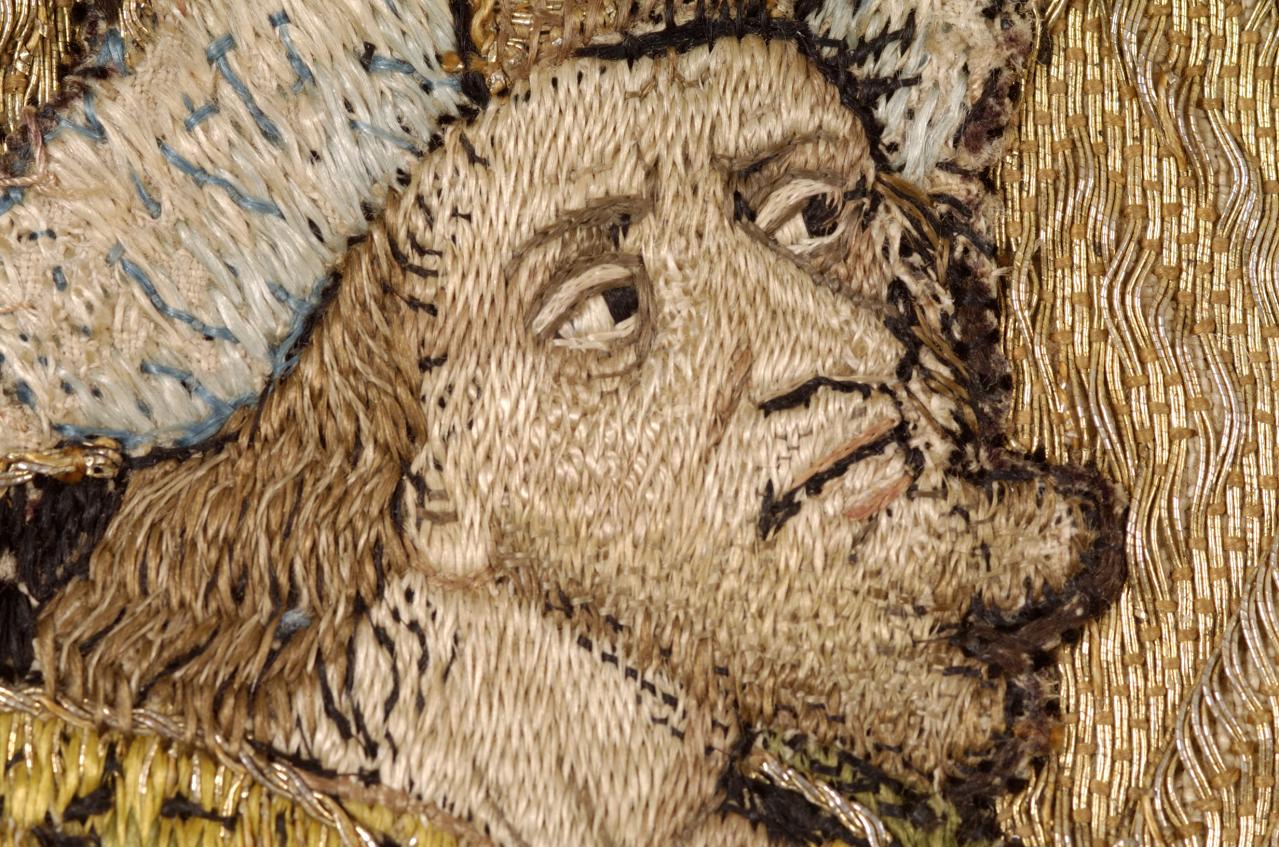A « MEDIEVAL » EMBROIDERY FROM 1849
Our object is an embroidered panel of relatively small size, 19x22 cm, representing on a gold ground a winged angel, the head slightly to its right and the arms holding, on a flowery hillock, an emblazoned coat of arms flanked by a bear to the left and by a griffon to the right. The embroidery of the ground is in couched gold crossed by red silk forming diamonds, whereas the animals are in couched gold and silver. The coat of arms is in polychrome silks with some gold and silver for the colors of metals. The angel and the hillock are in polychrome silks, fig. 1. In the back of the embroidery, on a label, we read: « From a Chasuble / in the possession of / Rev W. Moore DD / Spalding / 1849 », fig. 2. This extraordinary small embroidery is remarkable by its delicacy, its magnificent state of preservation, and its completely medieval character which makes immediately think of a production of the XVth century.
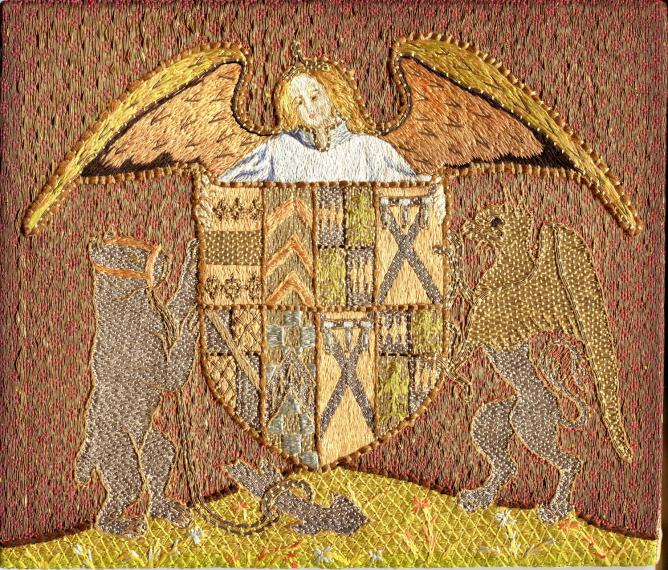
Figure 1: Angel holding the coat of arms of the count of Warwick .© Coillection J & D. Fruman
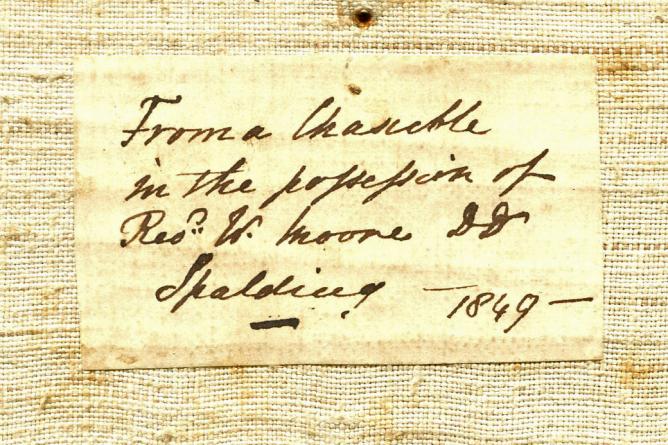 Figure 2: Label on the back of the embroidery of Fig. 1.© Collection J & D. Fruman
Figure 2: Label on the back of the embroidery of Fig. 1.© Collection J & D. Fruman
At first, Josiane searched in our library and discovered that the design of the embroidery is identical to those in the extremities of the arms of a cross of chasuble, fig. 3, belonging to the Victoria and Albert Museum in London (inv. 402 - 1907) dated between 1434 and 1445; the first date corresponding to the marriage of Henry de Beauchamp with Cecily Neville and the second to his death. He becomes count of Warwick in 1439 at the death of his father and was made Duke by Henri VI of England in 1445. He dies in 1446.
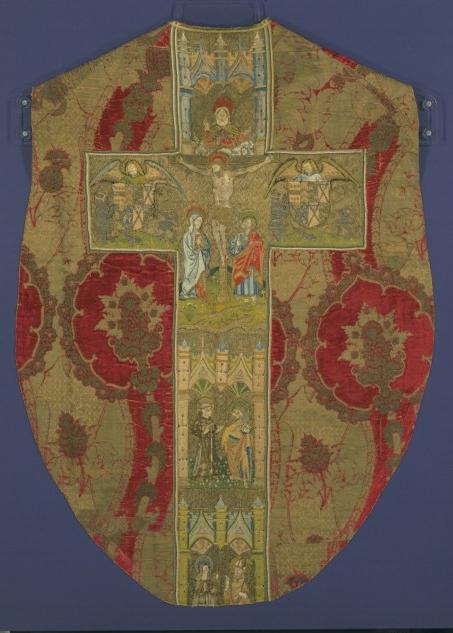 Figure 3: The Warwick chasuble. © Victoria and Albert Museum, London
Figure 3: The Warwick chasuble. © Victoria and Albert Museum, London
Now, our embroidery is indubitably of the XIXth century and a very close copy of a detail of the said chasuble of Warwick, property in 1849 of William Moore, Perpetual Curate of Spalding, Vicar of Moulton, and Prebendary of Lincoln and President of the Gentlemen Society de Spalding. We contacted Madam Clare Browne, curator of textiles at the Victoria & Albert Museum, who was kind enough to pass onto us the following information about this chasuble whereabouts: it was purchased by the Museum at the sale of the contents of a house called Bookham Lodge in 1907. It had been exhibited at the Burlington Fine Arts Club exhibition on English Embroidery in 1905, and included in the catalogue (p.71), although not illustrated; at that stage it was stated as belonging to Ralph Coker Adams-Beck, Clerk of the Ironmongers' Hall, London. In 1866 it was in the possession of the Revd Moore of Spalding, as there is correspondence from that year on our file to Revd Moore from G. F. Bodley (presumably the architect George Frederick Bodley), asking Revd Moore if he might be willing to sell the chasuble, as « it is just what I am wanting to possess, as a specimen of rather late 15th century work, woven and embroidered ». We can thus think that that Rev. Moore was fully aware of the interest of this object and decided in 1849 to have made an embroidered copy of the coat of arms represented on the chasuble.
Naturally we could not remain without making a direct comparison between our embroidery and the chasuble of the Victoria & Albert. So, we organized a visit to London and got an appointment to examine the Warwick chasuble which is now in the new textile reserve of the V & A. Fig. 4 shows clearly that the embroiderer of the XIXth century knew perfectly well the medieval techniques and, in particular, the couched gold one, and that he, or she, have transcribed with mastery. The differences of tone between both works can be due to the choice of the embroiderer which preferred less faded colors.
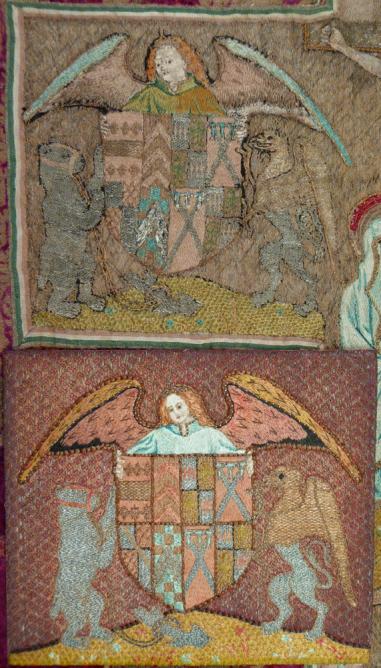 Figure 4: Comparison of the angelo holding a coat of arms of the count of Warwick. Up .© Victoria and Albert Museum, London ; down © Collection J & D. Fruman
Figure 4: Comparison of the angelo holding a coat of arms of the count of Warwick. Up .© Victoria and Albert Museum, London ; down © Collection J & D. Fruman
Then, we have a very beautiful example of «medieval» embroidery copied from an original old of a little more than four hundred years at the time. To our knowledge this is a particularly interesting example of the survival of the medieval techniques of embroidery in England of the XIXth century.
The theme of an angel or angels holding a coat of arms in a liturgical vestment is finally rather usual as we can see from the examples of the hood, fig. 5, of Don Alfonso Carrillo de Acuña (archbishop of Toledo from 1446 till 1482), and the front of a dalmatic, fig. 6, and orphrey of a cope, fig. 7, of Don Alonso de Fonseca (archbishop of Toledo between 1524 and 1534), the three in the treasure of the cathedral of Toledo. It is however surprising, but not totally unusual, to find a coat of arms of a patrician family instead of that of a bishop. In our collection we have two identical embroideries, probably from a dalmatic, with the arms of the family Taglieschi d'Anghiari, nobleman of this city, which will be the subject of a future object of the week.
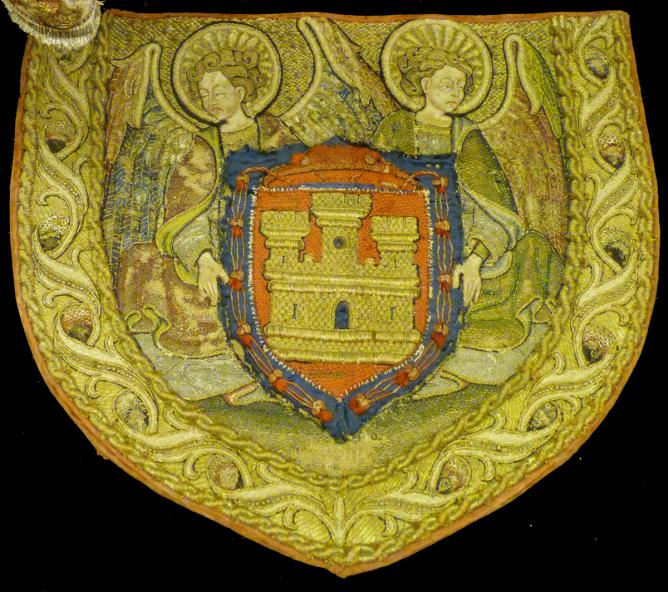
Figure 5 : Hood from the cope of Don Alfonso Carrillo de Acuña (archbishop of Tolède from 1446 to 1482) at the Cathedral of Tolède.
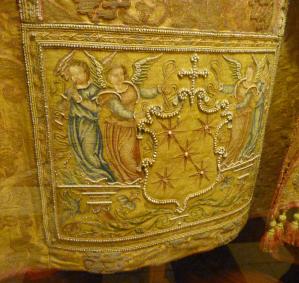
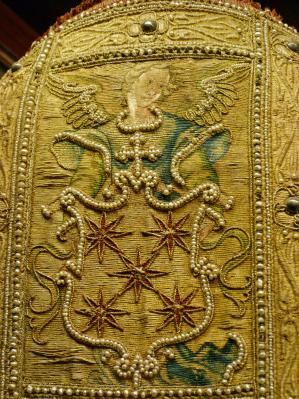
Figure 6 (left) et Figure 7 (right): Orphrey from a cope and bottom of a dalmatic with the coat of arms of Don Alonso de Fonseca (archbishop of Tolède from 1524 to 1534) at the Cathedral of Tolède.
Date de dernière mise à jour : 30/01/2020
Ajouter un commentaire
